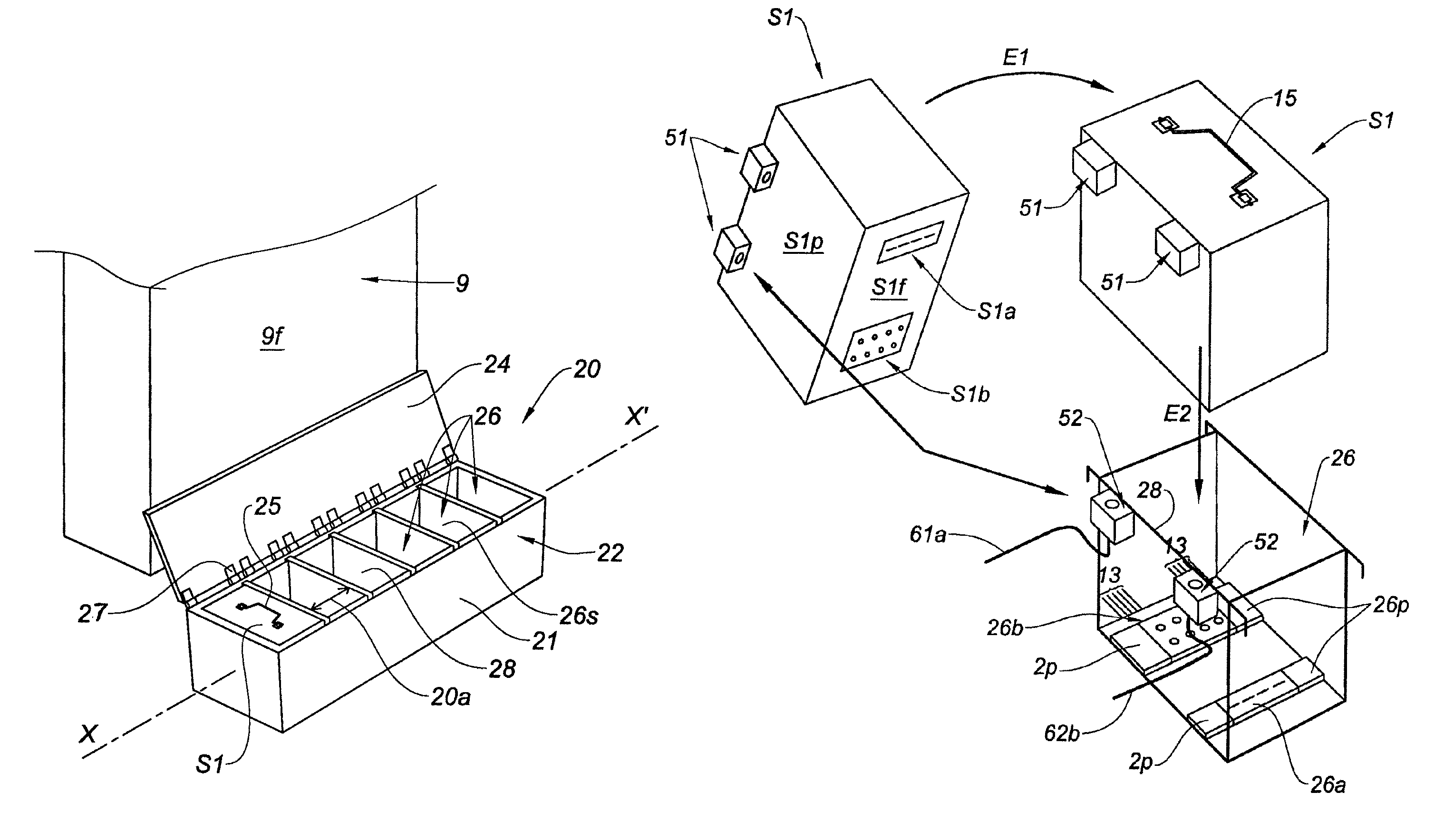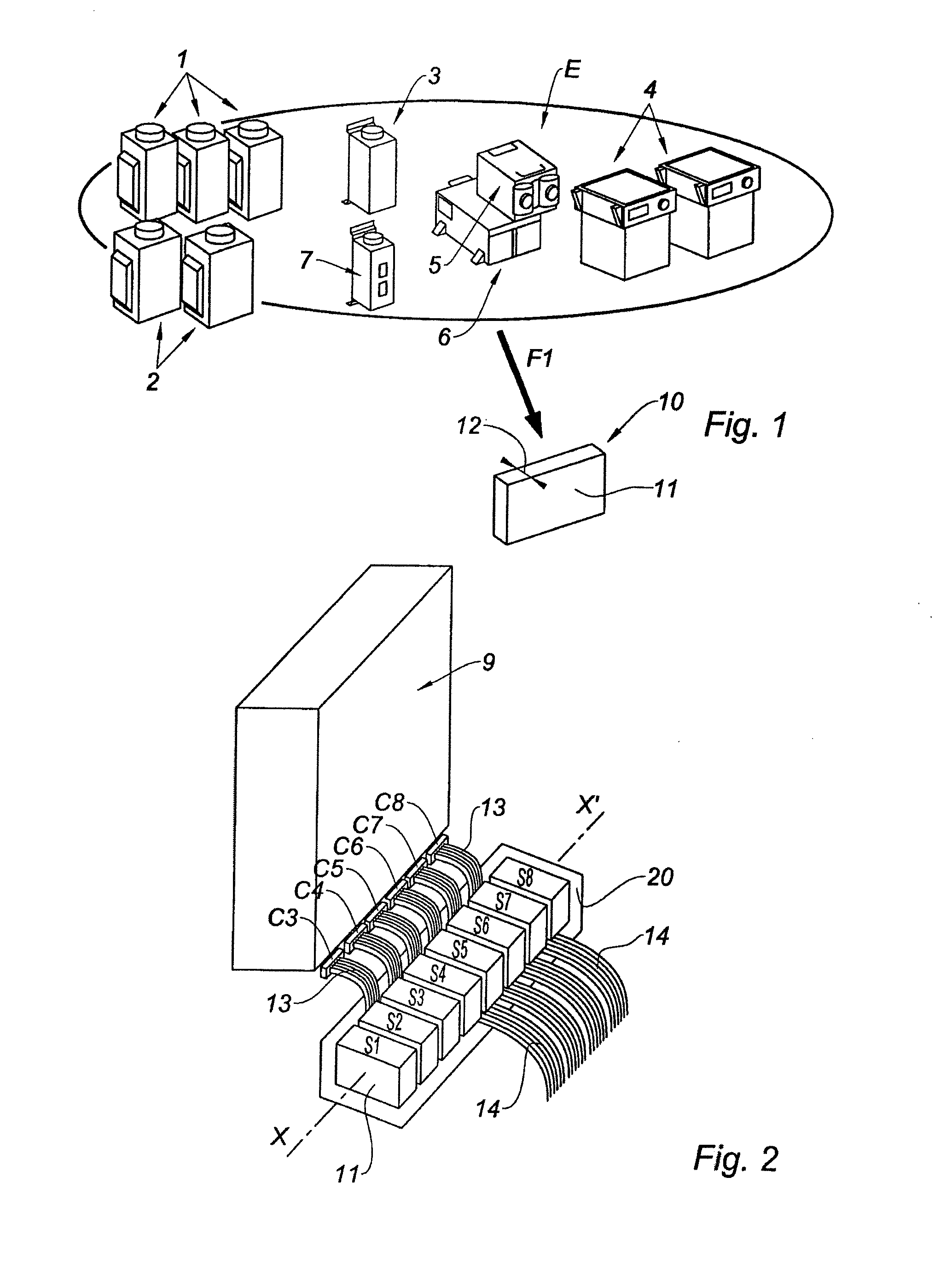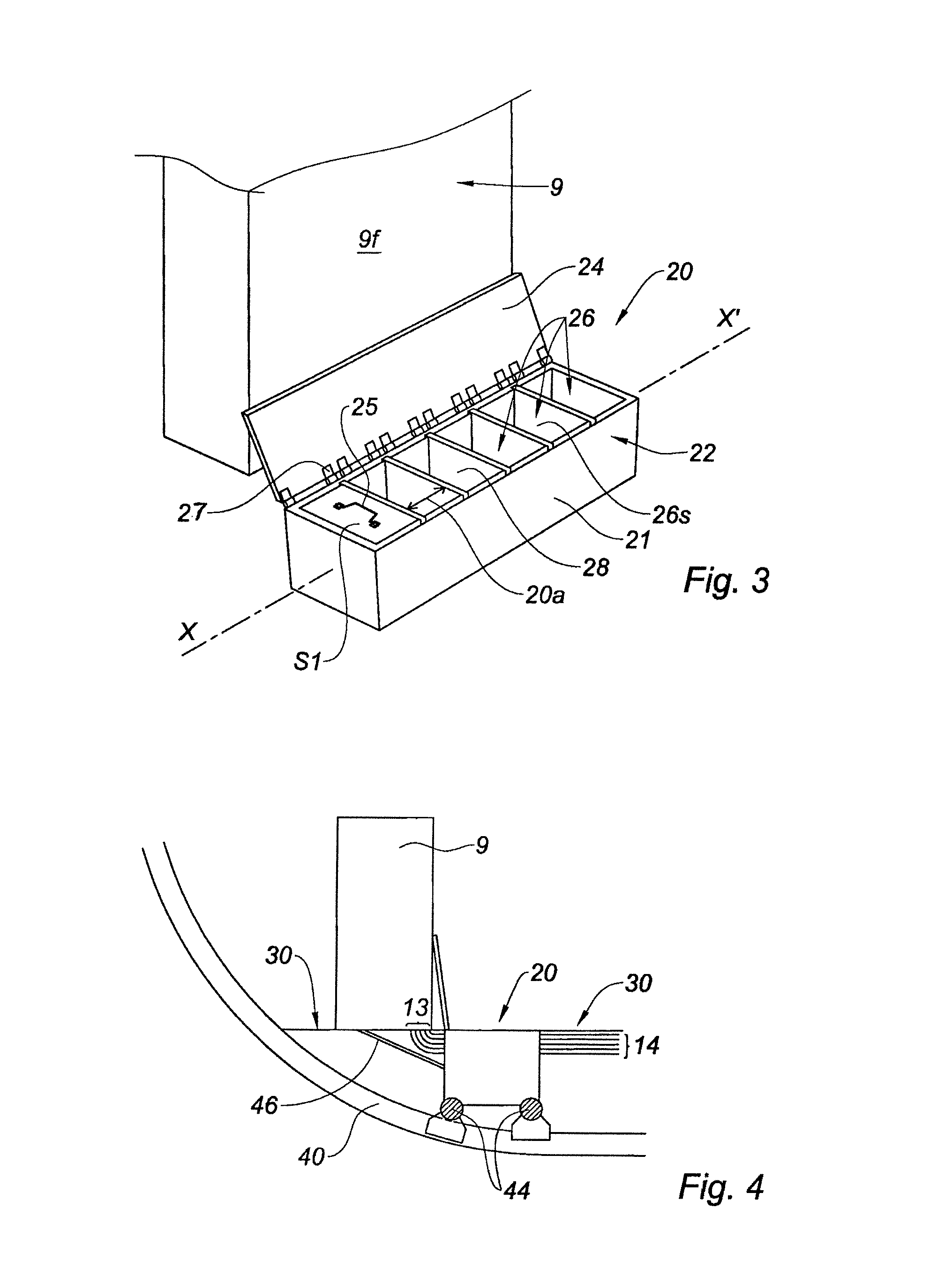Method of equipments integration for a complex electrical centre and module of implementation
a technology of equipment integration and complex electrical centre, which is applied in the direction of substation/switching arrangement casing, indirect heat exchanger, light and heating apparatus, etc., to achieve the effect of convenient maintenance, simple electrical connection of equipment, and good access to each piece of equipmen
- Summary
- Abstract
- Description
- Claims
- Application Information
AI Technical Summary
Benefits of technology
Problems solved by technology
Method used
Image
Examples
Embodiment Construction
[0045]The terms “upper” and derivatives, “lower” and derivatives, as well as “vertical” and derivatives, relate to a relative localization of elements or element parts positioned in operation or equivalent.
[0046]Referring to FIG. 1, the set E illustrates electrical equipment of an electrically autonomous structure, a plane in the example. This equipment has different sizes. There can be mentioned three autotransformers (AT) 1, two transformers-current rectifiers (TR) 2, a static undulator 3, two batteries 4 and other pieces of equipment 5, 6, 7 associated with the electrical power centre so as to be applied to the APU (auxiliary power unit). The “electrical power centre” function is divided into two independent boxes or power centres 9 (only the left power centre is represented on the Figs.).
[0047]Each of the pieces of equipment 1 to 7 is formatted (arrow F1) according to a model 10 in a wholly parallelepipedic shape with a main section 11 of a determined size. Such formatting is ma...
PUM
| Property | Measurement | Unit |
|---|---|---|
| mass | aaaaa | aaaaa |
| mass | aaaaa | aaaaa |
| mass | aaaaa | aaaaa |
Abstract
Description
Claims
Application Information
 Login to View More
Login to View More - R&D
- Intellectual Property
- Life Sciences
- Materials
- Tech Scout
- Unparalleled Data Quality
- Higher Quality Content
- 60% Fewer Hallucinations
Browse by: Latest US Patents, China's latest patents, Technical Efficacy Thesaurus, Application Domain, Technology Topic, Popular Technical Reports.
© 2025 PatSnap. All rights reserved.Legal|Privacy policy|Modern Slavery Act Transparency Statement|Sitemap|About US| Contact US: help@patsnap.com



